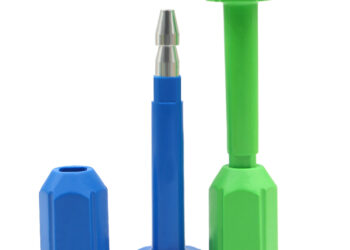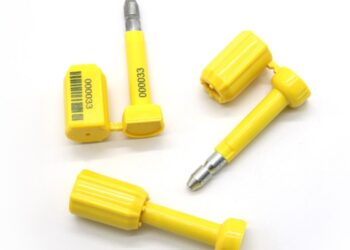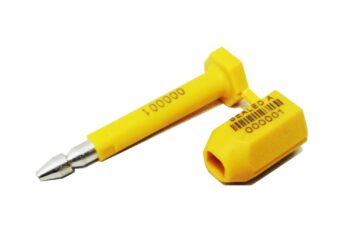ISO 17712 is an international standard that specifies requirements for mechanical security seals used for securing freight containers. These seals play a crucial role in maintaining the integrity of cargo during transportation, preventing unauthorized access, and ensuring the safety of goods. ISO 17712 provides guidelines for the classification and testing of security seals, ensuring their effectiveness in various security applications.
The standard categorizes security seals into three main types: “Indicative Seals,” “Barrier Seals,” and “High Security Seals.” Each type serves a specific purpose and possesses distinct features that make them suitable for different security requirements.
Indicative Seals:
Indicative seals are designed primarily to show evidence of tampering or unauthorized access. They provide a basic level of security and are commonly used in situations where a higher level of protection isn’t required. These seals are often made from materials such as plastic or thin metal, making them relatively easy to break or manipulate. They are used to deter casual tampering and to indicate if a container or package has been opened.
Barrier Seals:
Barrier seals are more robust and offer a higher level of security compared to indicative seals. They are designed to prevent easy access and tampering, making them suitable for applications where a moderate level of protection is needed. Barrier seals are constructed with stronger materials like metal and feature more complex locking mechanisms. They require specialized tools to be removed, discouraging unauthorized individuals from gaining access to secured items.
High Security Seals:
High security seals, also known as “bolt seals,” are the most advanced type of security seal according to ISO 17712. These seals are intended for use in situations where the highest level of protection is required, such as international shipping of valuable or sensitive cargo. High security seals are constructed with heavy-duty materials like metal and are designed to withstand various forms of tampering, including attempts to cut or break them. They often have unique identification markings and advanced locking mechanisms that make them extremely difficult to tamper with without leaving visible evidence.
ISO 17712 outlines specific requirements for each type of seal, including tensile strength, impact resistance, and tamper-evident features. Additionally, the standard provides guidelines for manufacturers to follow when testing and certifying their seals. Seals that meet the requirements set by ISO 17712 are marked with specific labels indicating their classification, making it easier for users to select the appropriate seal for their security needs.
It’s important to note that while ISO 17712 provides a standardized framework for security seals, the effectiveness of these seals also depends on proper implementation and handling. Users must ensure that seals are properly inspected, applied, and documented throughout the shipping process to maintain security and prevent tampering.
Conclusion:
ISO 17712 defines three main types of security seals: Indicative Seals, Barrier Seals, and High Security Seals. Each type serves a different security purpose and offers varying levels of protection against tampering and unauthorized access. By adhering to the guidelines outlined in ISO 17712, manufacturers and users can better ensure the integrity of cargo and the safety of goods during transportation and storage.











